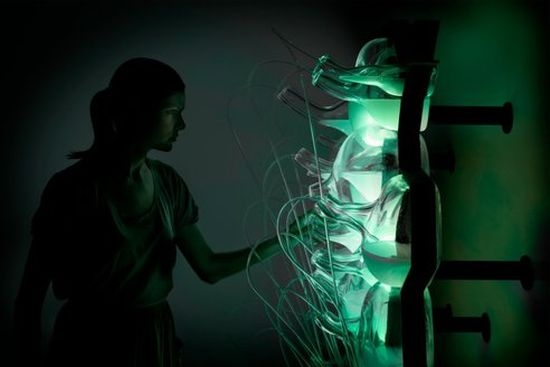Wednesday, January 16. 2013
Via Dezeen (thanks Christian Babski for the link)
-----
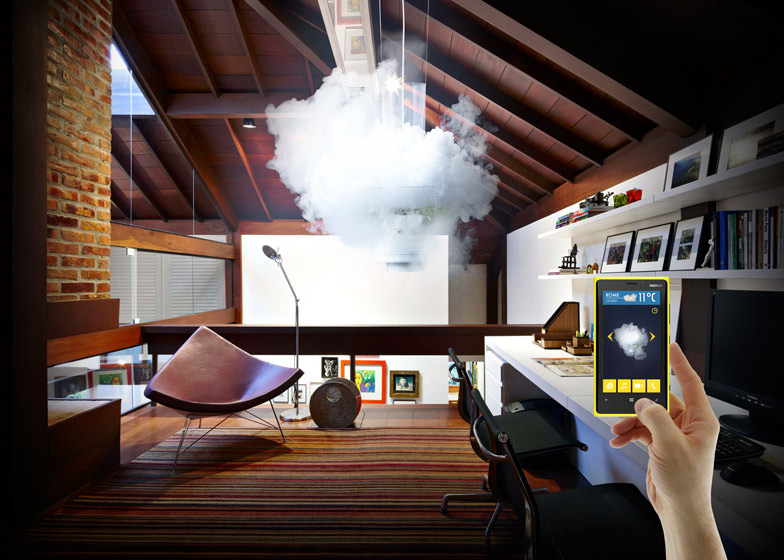
More about it on Dezeen's website.
Friday, December 21. 2012
Via MIT Technology Review
-----
A computer that can be screwed into a light socket can project interactive images onto any nearby surface.
By Tom Simonite on November 29, 2012
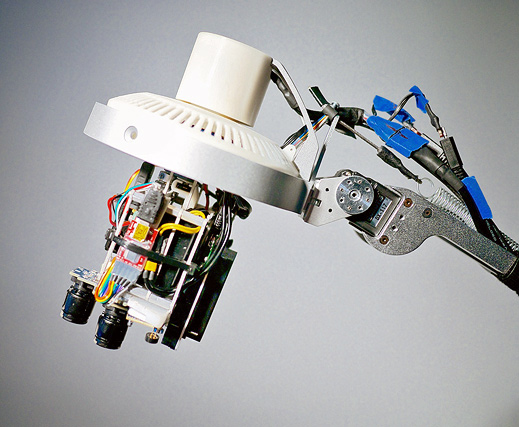
Desk toy: A computer with a camera and projector fits into a light bulb socket, and can make any surface interactive.
Powerful computers are becoming small and cheap enough to cram into all sorts of everyday objects. Natan Linder, a student at MIT’s Media Lab, thinks that fitting one inside a light bulb socket, together with a camera and projector, could provide a revolutionary new kind of interface—by turning any table or desk into a simple touch screen.
The LuminAR device, created by Linder and colleagues at the Media Lab, can project interactive images onto a surface, sensing when a person’s finger or hand points to an element within those images. Linder describes LuminAR as an augmented-reality system because the images and interfaces it projects can alter the function of a surface or object. While LuminAR might seem like a far-fetched concept, many large technology companies are experimenting with new kinds of computer interfaces in hopes of discovering new markets for their products (see “Google Game Could Be Augmented Reality’s First Killer App” and ”A New Chip to Bring 3-D Gesture Control to Smartphones”).
Linder’s system uses a camera, a projector, and software to recognize objects and project imagery onto or around them, and also to function as a scanner. It connects to the Internet using Wi-Fi. Some capabilities of the prototype, such as object recognition, rely partly on software running on a remote cloud server.
LuminAR could be used to create an additional display on a surface, perhaps to show information related to a task in hand. It can also be used to snap a photo of an object, or of printed documents such as a magazine. A user can then e-mail that photo to a contact by interacting with LuminAR’s projected interface.
“I’m really excited by the way this would be used by engineers and designers,” says Linder, who believes it could be useful for any creative occupation that often involves working with paper and other tangible objects as well as computers.

LuminAR could have uses beyond the desk or office environment. One demo to illustrate the use of one of the devices features a mock-up of an electronics store, where the device projected price tags next to cameras on a table, as well as buttons that could be used to call up more product information. Linder has also tried using it for Skype-style video calls, projecting the caller’s video onto the wall next to the desk the lamp stood on.
The current prototype is built around a processor from Qualcomm’s Snapdragon series, commonly used in smartphones and tablets. Linder and colleagues are experimenting with both a custom Linux-based operating system and a modified version of Google’s Android mobile operating system.
Earlier LuminAR prototypes included a motorized arm for the lamp, too. But the researchers are currently focused on finessing the bulb-only version. That design cuts costs and complexity, and also makes the technology easier to adopt, says Linder. “It has zero cost of adoption. You just change the bulb in your lamp,” he says.
Tuesday, October 30. 2012
Via The Creators Project
-----

No matter how compact, portable, and convenient music formats get, somehow there is still a market for vinyl. If folks are that attached to impractically large plastic discs and are willing to continue buying them for the sake of purism, then why not take things in the other direction? Sound artist Yuri Suzuki designed The Sound of Earth, a custom globe which essentially acts as a spherical record, with the track spiraling all the way around it from top to bottom.
The music itself is choppy and abstract, and yet it has an almost rhythmic feel as the needle glides over various land masses. Described by Guardian as “a surreal mashup of field recordings taken by Suzuki on his travels, along with fragments of national anthems and folk music.”
As you can hear in the video above, it sounds like something between a skipping record and scrolling through FM radio stations. We’re curious as to what it sounds like when the stylus reaches Brooklyn.
[via: Fact]
@ImYourKid
Friday, October 26. 2012
-----
By Emilie Chalcraft

Hackney designer Paul Cocksedge has launched a invisible bookend to find out if people will buy an object for its function rather than its appearance.
More about it HERE.
Wednesday, October 24. 2012
Personal comment:
Tony Dunne & Fiona Raby would certainly produce a far less slick scenario for this type of robotic product (they would probably rather even not design such a functional robot at all ;)). But still, it is now the third time that I see an ad for this type of product and I find it interesting to envision streets of cities filled with "ghosts" of remote citizens from distant cities or countrysides (that won't be the countryside anymore therefore) hanging around in the form of robots. Therefore, we'll have to design cities and architectures for its many inhabitants including now, robots.
Wednesday, March 28. 2012
-----
de Lidija Grozdanic
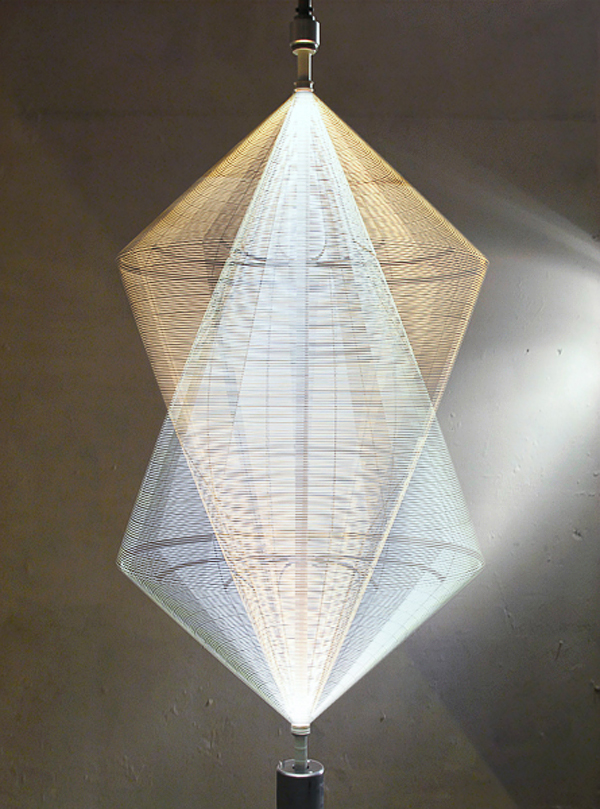
They’re called Thixotropes. Compositions comprised of eight illuminated mechanized structures create choreographies of lighting effects that alternate form warm to cold light. Designed by London based design firm Troika, these suspended systems merge technology with art and explore the realm in which rational observations intersect with the metaphysical and surreal.
Each of the structures is shaped as a composition of intersecting angular and geometric forms, made of thin tensed banding lined with rows of LED’s. The constructions continuously revolve around their own axis thereby materializing the path of the light and dissolving the spinning structures into compositions of aerial cones, spheres and ribbons of warm and cold light while giving life and shape to an immaterial construct.
The lighting design combines Troika’s interest in art and science and stretches the boundaries of a long history of light painting photography that can be traced back to 1914 when Frank Gilbreth, along with his wife Lillian Moller Gilbreth, used small lights and the open shutter of a camera to track the motion of manufacturing and clerical workers.
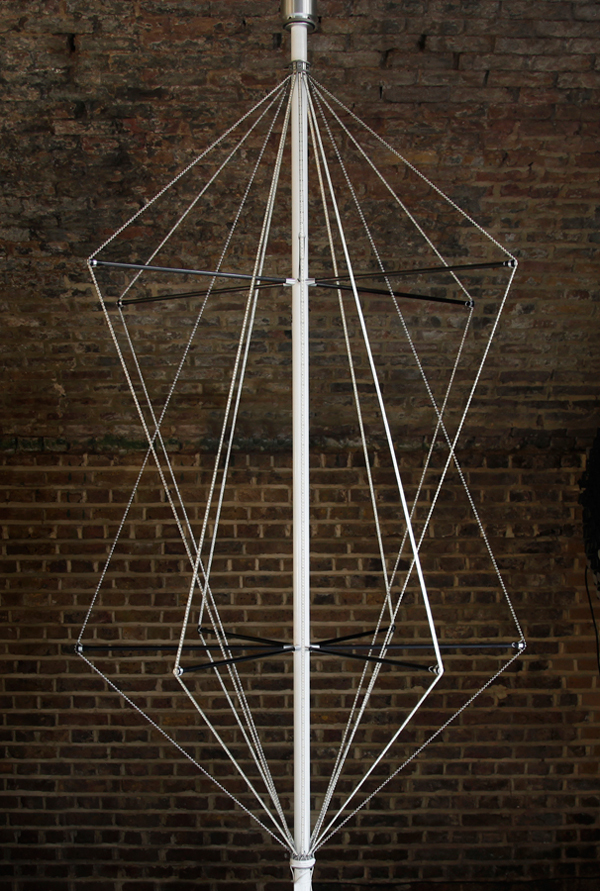


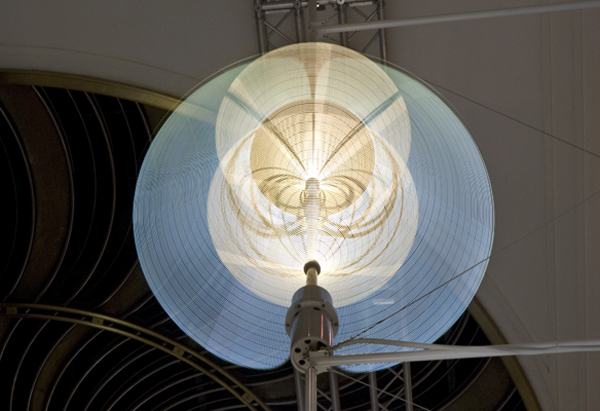
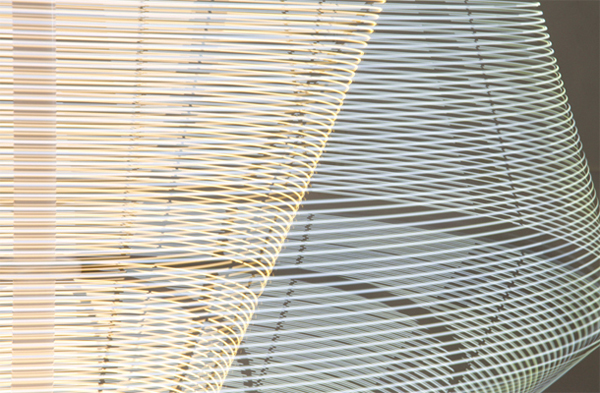
Friday, March 23. 2012
Via Pasta&Vinegar
-----
- reaDIYmate: Wi-Fi paper companions
"reaDIYmates are fun Wi-fi paper companions that move and play sounds depending on what's happening in your digital life. Assemble them in 10 minutes with no tools or glue, then choose what you want them to do through a simple web interface. Link them to your digital life (Gmail, Facebook, Twitter, Foursquare, RSS feeds, SoundCloud, If This Then That, and more to come) or control them remotely in real time from your iPhone."
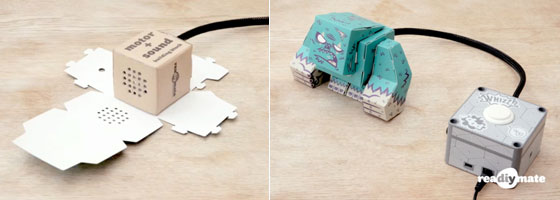
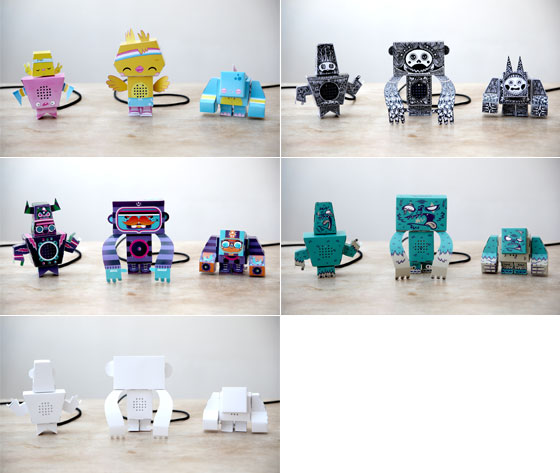
Friday, February 24. 2012
Nick Bilton at the Times’s Bits Blog, hardly a site for speculation on vaporware, tells us to expect something remarkable from Google by the year’s end: heads-up display glasses “that will be able to stream information to the wearer’s eyeballs in real time.”
That’s right. Google’s going to turn us all into the Terminator. Minus the wanton killing, of course.
The Times post builds on the reporting of Seth Weintraub, who blogs at 9 to 5 Google. He had written about the glasses project in December, as well as this month. Weintraub had one tipster, who told him the glasses would look something like Oakley Thumps. Bilton cites “several Google employees familiar with the project,” who said the devices would cost between $250 and $600. The device is reportedly being built in Google’s “X offices,” a top-secret lab that is nonetheless not-top-secret-enough that you and I and other readers of the Times know about it. (X is favored letter for Google of late, when it comes to blue sky projects.)
A few other details about the glasses, that have emerged from either Bilton or Weintraub: they would be Andoid-based and feature a small screen that sits inches from the eye. They’d have access to a 3G or 4G network, and would have motion and GPS sensors. And, in wild, Terminator style, the glasses would even have a low-res camera “that will be able to monitor the world in real time and overlay information about locations, surrounding buildings and friends who might be nearby,” per Bilton. Google co-founder Sergey Brin is reportedly serving as a leader on the project, along with Steve Lee, who made Latitude, Google’s mapping software.
Though reportedly arriving for sale in 2012, the glasses may never reach a mass market. Google is said to be exploring ways to monetize the glasses should consumers take a liking to them. “If consumers take to the glasses when they are released later this year, then Google will explore possible revenue streams,” writes Bilton.
Google isn’t the first to dabble in the idea of heads-up display glasses. Way back in 2002, in fact, we wrote about how electronics could enable augmented reality glasses for soldiers. Though its ambitions are much more modest--hardly anything to hold a candle to The Terminator--a company called 4iiii Innovations has made some basic heads-up display glasses for athletes wanting to monitor their progress. And two years ago, TR took a pair of $2,000 augmented reality glasses from Vuzix for a spin, declaring them “dazzling”--but still wondering, “who’ll wear them?”
I’ve written before that smartwatches could represent a frontier of smartness-on-your-person. “They stand to transform your wrist into something akin to (if a wee bit short of) a heads-up display,” was how I put it. If the information Bilton and Weintraub have on Google is sound, I may have to dial back my enthusiasm on smartwatches--or at least stop likening them to heads-up displays, once the real thing exists.
Then again, smartwatches may still occupy a middle ground between utility and style. On the one hand, Oakley Thump-style smartglasses would be extraordinarily useful, for some. On the other hand, they would also be--let's face it--irredeemably geeky. As Bilton writes, “The glasses are not designed to be worn constantly — although Google expects some of the nerdiest users will wear them a lot.”
If you thought your smartwatch-sporting friend was a geek, just wait till he's flanked by people playing cyborg with Google’s forthcoming technology.
Personal comment:
Well, I'n not so sure if this is a good news... (in fact I don't --I don't like Oakley's...--, unless it would be an open project / open data with a more "design noir" approach), but Terminators will certainly be happy!
Thursday, February 23. 2012
-----
While the subject of online piracy is certainly nothing new, the recent protests against SOPA and the federal raid on Megaupload have thrust the issue into mainstream media. More than ever, people are discussing the controversial topic while content creators scramble to find a way to try to either shut down or punish sites and individuals that take part in the practice. Despite these efforts, online piracy continues to be a thorn in Big Media’s side. With the digital media arena all but conquered by piracy, the infamous site The Pirate Bay (TPB) has begun looking to the next frontier to be explored and exploited. According to a post on its blog, TPB has declared that physical objects named “physibles” are the next area to be traded and shared across global digital smuggling routes.
TPB defines a physible as “data objects that are able (and feasible) to become physical.” Namely, items that can be created using 3D scanning and printing technologies, both of which have become much cheaper for you to actually own in your home. At CES this year, MakerBot Industries introduced its latest model which is capable of printing objects in two colors and costs under $2,000. With the price of such devices continuing to drop, 3D printing is going to be part of everyday life in the near future. Where piracy is going to come in is the exchange of the files (3D models) necessary to create these objects.
A 3D printer is essentially a “CAD-CAM” process. You use a computer-aided design (CAD) program to design a physical object that you want made, and then feed it into a computer-aided machining (CAM) device for creation. The biggest difference is that traditional CAM setups, the process is about milling an existing piece of metal, drilling holes and using water jets to carve the piece into the desired configuration. In 3D printing you use extrusion to actually create what is illustrated in the CAD file. Those CAD files are the physibles that TPB is talking about, since they are digital they are going to be as easily transferred as an MP3 or movie is right now.

It isn’t too far outside the realm of possibility that once 3D printing becomes a part of everyday life, companies will begin to sell the CAD files and the rights to be able to print proprietary items. If the technology continues to advance at the same rate, in 10 or 20 years you might be printing a new pair of Nikes for your child’s basketball game right in your home (kind of like the 3D printed sneakers pictured above). Instead of going to the mall and paying $120 for a physical pair of shoes in a retail outlet, you will pay Nike directly on the internet and receive the file necessary to direct your printer to create the sneakers. Of course, companies will do their level best to create DRM on these objects so that you can’t freely just print pair after pair of shoes, but like all digital media it will be broken be enterprising individuals.
TPB has already created a physibles category on its site, allowing you to download plans to be able to print out such things as the famous Pirate Bay Ship and a 1970 Chevy hot rod. For now it’s going to be filled with user-created content, but in the future you can count on it being stocked with plans for DRM-protected objects.
Wednesday, February 22. 2012
Via GizFactory
-----
Posted by Ujagar Singh on 29 Nov 2011 05:12 PM
Philips,has offered a new genre of living biological lighting product.The subtle glow is generated by using micro organisms from house hold waste.The concept explores the use of bio luminescent bacteria, which are fed with methane and composted material drawn from the methane digester in the Microbial Home system.Alternatively,the cellular light array can be filled with fluorescent proteins that emit different frequencies of light. Philips feel this,in addition to indoor usage,can also be used outdoors,for night time road markings, warning strips on stairs or curbs,exit signs,lights for sensors and so on. Sounds interesting,effectiveness can be gauged only after use.

Thanks Sinan for the tip!
|














